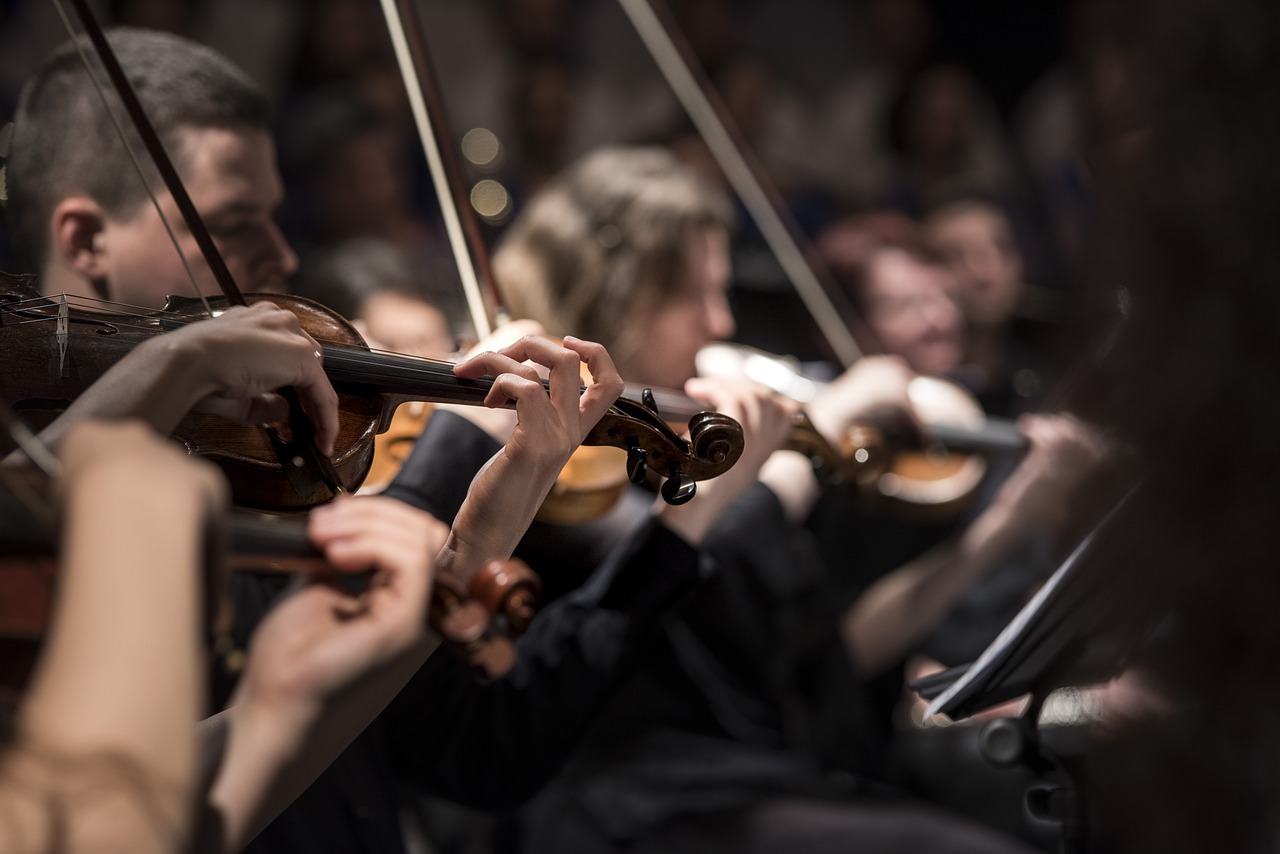
An orchestra is a mostly large instrumental ensemble consisting of several instrument groups. However, there are considerable differences in the composition and tasks of an orchestra.
The orchestra and the concept of the orchestra have developed over many centuries, with many changes in the field of instrumentation closely linked to the development or invention of individual instruments.
In the course of time, a seating arrangement was coined for the classical orchestra, which can be varied for various reasons.
In order for the conductor of an orchestra to get an overview of the entire musical material of each instrument to be played, he uses a so-called score as a template.
Orchestra types
Orchestras can be separated in different ways. The most important are the distinctions between occupation and tasks.
From a line-up point of view, there is, the symphony, chamber, string, wind or brass orchestra. However, these are only the most common species. There are also plucked, balalaika or jazz orchestras – and you could give many more examples here, depending on the instrumentation.
In terms of function, one can distinguish in a way according to symphony, opera, ballet, musical, church, entertainment, radio and film music orchestras as well as, for example, dance, spa, circus and military bands.
- A symphony orchestra is more likely to play concerts and symphonies, with a concert atmosphere on stage.
- An opera orchestra, on the other hand, has an accompanying function and is thus part of a theatrical performance. This orchestra then sits in the orchestra pit of the Opera house or theatre house.
However, since concerts as well as operas or ballet performances take place in many venues, the orchestra also assumes both of the mentioned functions.
Development of the orchestra and its instrumentation
In the Middle Ages and the Renaissance there were hardly any instrumental compositions, but the vocal works prevailed, but some of them were accompanied. The entire ensemble of singers and instrumentalists was called chaplet that time. In terms of instrumentation, there were more wind instruments than others. Overall, however, an exact instrumentation was rarely required in the composition, so that the same piece could be instrumented differently in each formation. Even in larger chapels, the soloist game was often favored.
During the Baroque period, the string sound was increasingly preferred, which thus came to the fore. But even during this time there were still large differences in the composition between individual orchestras. Only constant was the division into foundation instruments such as cello, bassoon, lute, harpsichord, organ and melody instruments like violin, flute, oboe.
Seating arrangement of the symphony orchestra
Apart from the fact that there is a standard arrangement of the individual instruments and instrument groups within a symphony orchestra, the seating arrangement may vary depending on the requirements of the performed musical work. The special wishes of the performing conductor can also bring about changes.
In the symphony orchestra’s usual seating arrangement today, the strings are first distributed semi-circularly in front of the conductor. The first and second violins sit to the left of the conductor; Violas, cellos and double basses are distributed on the right side.
In an older seating arrangement, also referred to as classic, the first violins are on the left outside, the second on the right outside. Violas, cellos and double basses are placed in the middle. Depending on the composition, this can result in a more rounded sound.
Behind the strings sit the woodwind instruments. The distribution is usually carried out in such a way that, from the conductor’s and the audience’s point of view, the highest playing instrument is located on the left. That is, from left to right the order flutes – clarinets – oboes – bassoons. Here, too, there are variants. For example, the clarinets can sit behind the flutes on the left, and the bassoon behind the oboes on the right.

